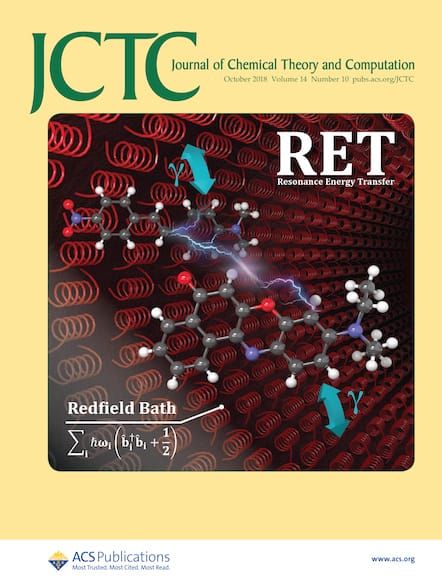基于区域的电荷转移分解及其在探索原型染料电荷转移特性中的应用。
IF 5.5
1区 化学
Q2 CHEMISTRY, PHYSICAL
引用次数: 0
摘要
我们介绍了一种新的基于域的电荷转移分析工具,利用对耦合簇双轨道的局部性。所提出的模型的独特特征包括能够监测系统不同部分或部分之间的电荷流动方向及其定量评估。我们评估了我们的新方法对不同掺杂和结构排列的染料敏化太阳能电池的候选染料的预测能力,并将我们的激发和轨道能量与各种密度泛函近似和基于域的局部对自然轨道变化的偶联簇单双进行了比较。我们的研究证实,具有s掺杂桥的染料是染料敏化太阳能电池最有前途的候选者,具有最大的供体→桥→受体定向电荷转移和最有利的电供和电接受功率。本文章由计算机程序翻译,如有差异,请以英文原文为准。
Domain-Based Charge-Transfer Decomposition and Its Application to Explore the Charge-Transfer Character in Prototypical Dyes.
We introduce a new domain-based charge-transfer analysis tool exploiting the locality of pair Coupled Cluster Doubles orbitals. Unique features of the proposed model include the ability to monitor the direction of the charge flow between different parts or moieties of the system and its quantitative evaluation. We assess the predictive power of our new method for selected dye candidates of dye-sensitized solar cells with different doping and structural arrangements and compare our results for excitation and orbital energies to various density functional approximations and the domain-based local pair natural orbital variant of coupled cluster singles doubles. Our work confirms that the dyes with S-doped bridges are the most promising candidates for dye-sensitized solar cells applications, featuring the largest donor → bridge → acceptor directed charge transfer and the most favorable electrodonating and electroaccepting powers.
求助全文
通过发布文献求助,成功后即可免费获取论文全文。
去求助
来源期刊

Journal of Chemical Theory and Computation
化学-物理:原子、分子和化学物理
CiteScore
9.90
自引率
16.40%
发文量
568
审稿时长
1 months
期刊介绍:
The Journal of Chemical Theory and Computation invites new and original contributions with the understanding that, if accepted, they will not be published elsewhere. Papers reporting new theories, methodology, and/or important applications in quantum electronic structure, molecular dynamics, and statistical mechanics are appropriate for submission to this Journal. Specific topics include advances in or applications of ab initio quantum mechanics, density functional theory, design and properties of new materials, surface science, Monte Carlo simulations, solvation models, QM/MM calculations, biomolecular structure prediction, and molecular dynamics in the broadest sense including gas-phase dynamics, ab initio dynamics, biomolecular dynamics, and protein folding. The Journal does not consider papers that are straightforward applications of known methods including DFT and molecular dynamics. The Journal favors submissions that include advances in theory or methodology with applications to compelling problems.
 求助内容:
求助内容: 应助结果提醒方式:
应助结果提醒方式:


